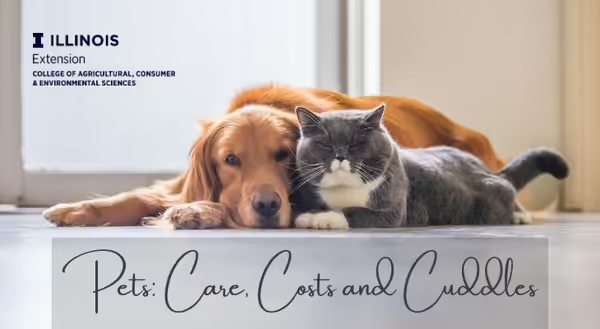
For as long as I can remember, we’ve always had a furry companion in my household. Whether it was a cat, dog, bird, or fish, having a pet as a companion can make many people happier. Having said that, pets have expenses to keep a pet healthy, happy, and safe.
Costs
There are many expenses when it comes to owning a pet. These include food, water, bathroom needs, such as cat litter or dog waste bags, as well as visits to a veterinarian for regular, well-being visits. For cats, the lifetime cost ranges from $22,000 to $31,000, and dogs range from $27,000 to $42,500 per pet. Add another friend for your furry companion, and these number double. (Those of us who might be crazy cat ladies are in real trouble!) This cost doesn’t include toys, collars and name tags, grooming, or emergency vet expenses. Many individuals and families underestimate the lifetime cost of ownership for their pets.
How do you curb these lifetime costs? Preventative care. Just like with humans, your furry friend needs to go to the vet annually for checkups as well as vaccinations. If something is wrong with your cat or dog, don’t wait to take them to get examined. You want to take care of a health issue before it gets worse. According to the Healthy Paws Pet Insurance & Foundation, some of the most common emergency issues in pets are stomach problems (eating things that are poisonous or dangerous), skin conditions, and eye infections/conditions.
Pet Insurance
Emergency vet expenses can add up quickly, but pet insurance is available. Currently, the costs can vary, but the younger your pet is, typically the smaller the amount you’ll pay in premium. There are also different plans that have varied deductibles you must pay before you’ll get reimbursed for an incident. Reimbursement rates differ. For example, if you have a vet bill for $100, you may get 80 % of the cost returned or as low as 50 % returned, depending on the terms of your insurance policy. Insurance analysts indicate that the global pet insurance market may grow to over $10 billion dollars in 2025. Why are people looking into pet insurance? Because pet owners want the option to make choices about their pets health without worrying about the costs. Currently only ten percent of dogs and five percent of cats are covered by pet medical insurance.
On the other hand, having a designated emergency fund just for your pets isn’t a bad idea. That way if something does happen, you’ll be ready to make decisions without considering the cost of saving a pet’s life. Just like life insurance, pet insurance increases with age and medical history.
Those Fun “Other Costs”
According to Colleen Kirk in her research article Dogs have masters, cats have staff: Consumers psychological ownership and their economic valuation of pets, “Research revealed that consumers who perceive greater control of their pet’s behavior will spend more on life-saving surgery, health and insurance, and specialty pet merchandise” The more control you think you have over your pet’s behavior, the more you’ll spend on your furry companion. Just be mindful of how much you’re spending on your accessories for your pets. Beds, collars, pet clothing, and extra treats can all add up quickly. For example, I typically order custom cat collars for my cats, and they range anywhere from $16-$20, depending on the design. Deciding on how much you’re comfortable to spend can be helpful to make sure you’re not running a spending deficit each month.
Lastly, if you consider pets to be a part of the family, consider who would take them in the event you passed away. Many times, I see family pets in animal shelters because the owner died or moved into a nursing home. Have discussions in advance with loved ones or friends so when Fido or Kitty need to be rehomed due to circumstances outside of the pet’s control, the transition can happen quickly without having to put them in a shelter.
Having a pet can be a wonderful experience. Knowing how much they cost during their lifetime and finding ways to prevent costly emergency vet visits, along with limiting specialty pet items, can help curb costs. Finally, make arrangements for the long-term care of pets part of estate planning.
Other Resources:
Keep your furry friends happy when you return to work by Tessa Hobbs-Curley, Family Life Educator
Keep your furry friends happy when you return to work (IMAGE)
Should We Get a Pet? Podcast by Sasha Grabenstetter and Camaya Wallace-Bechard